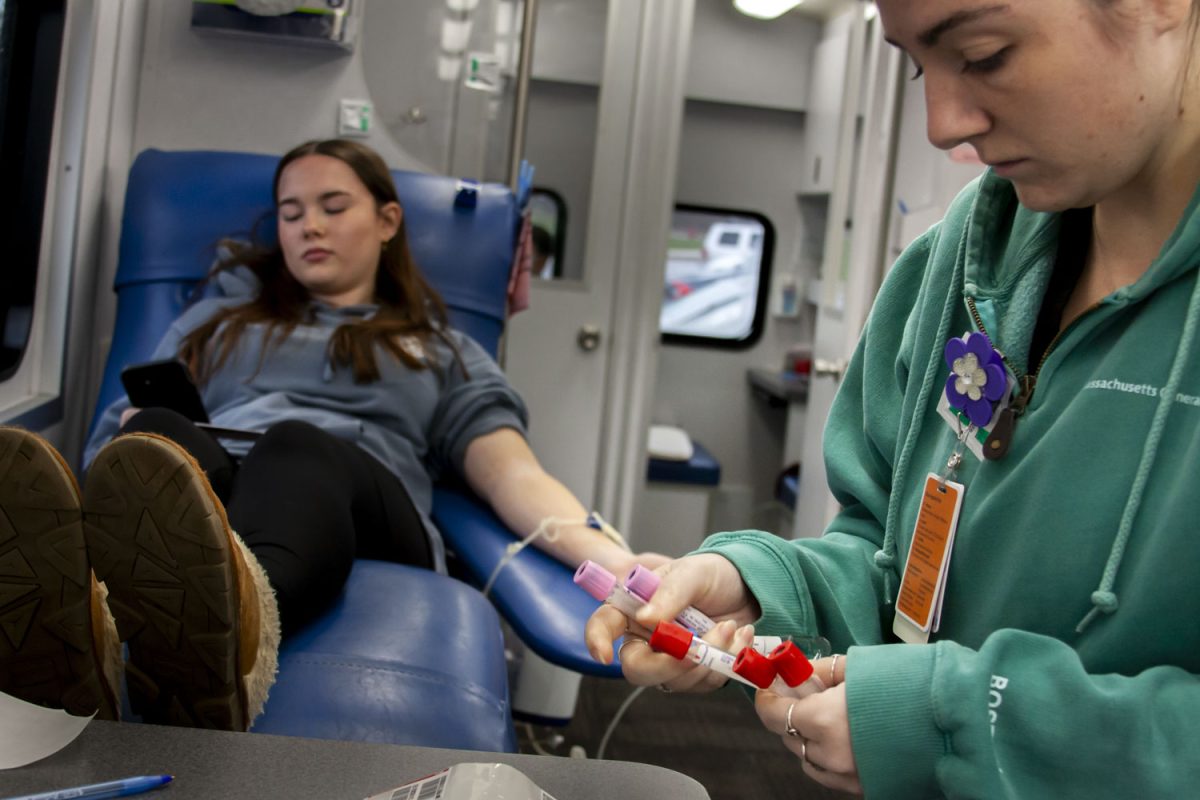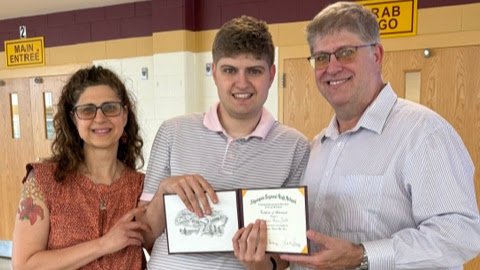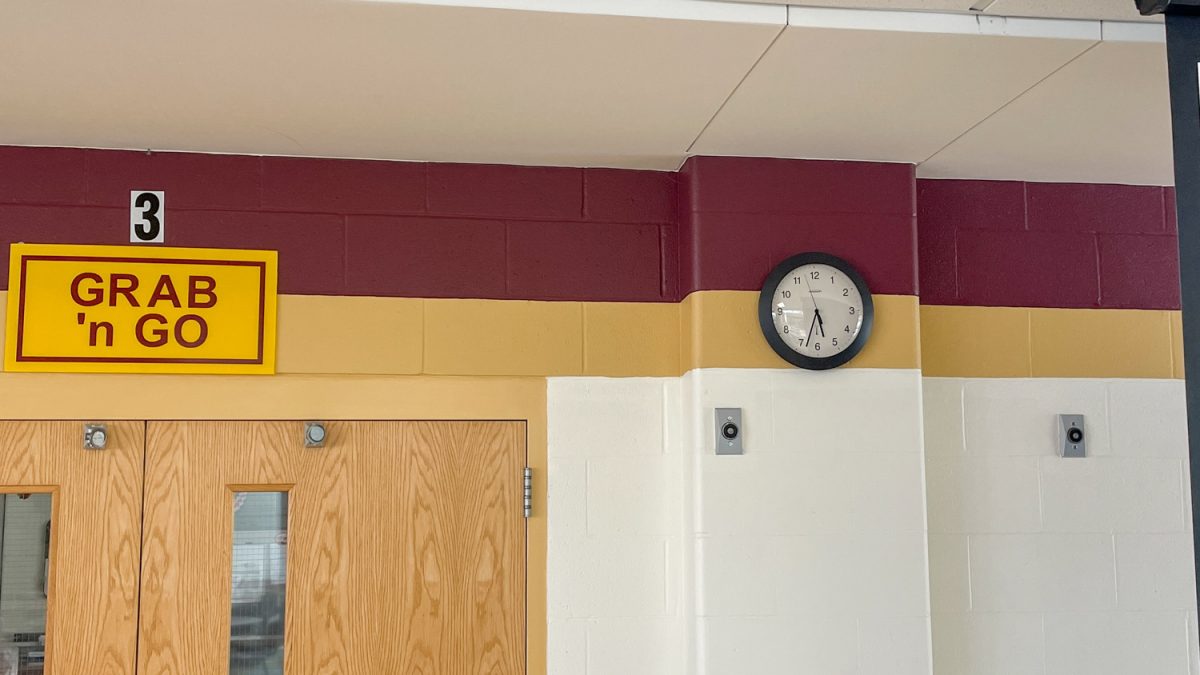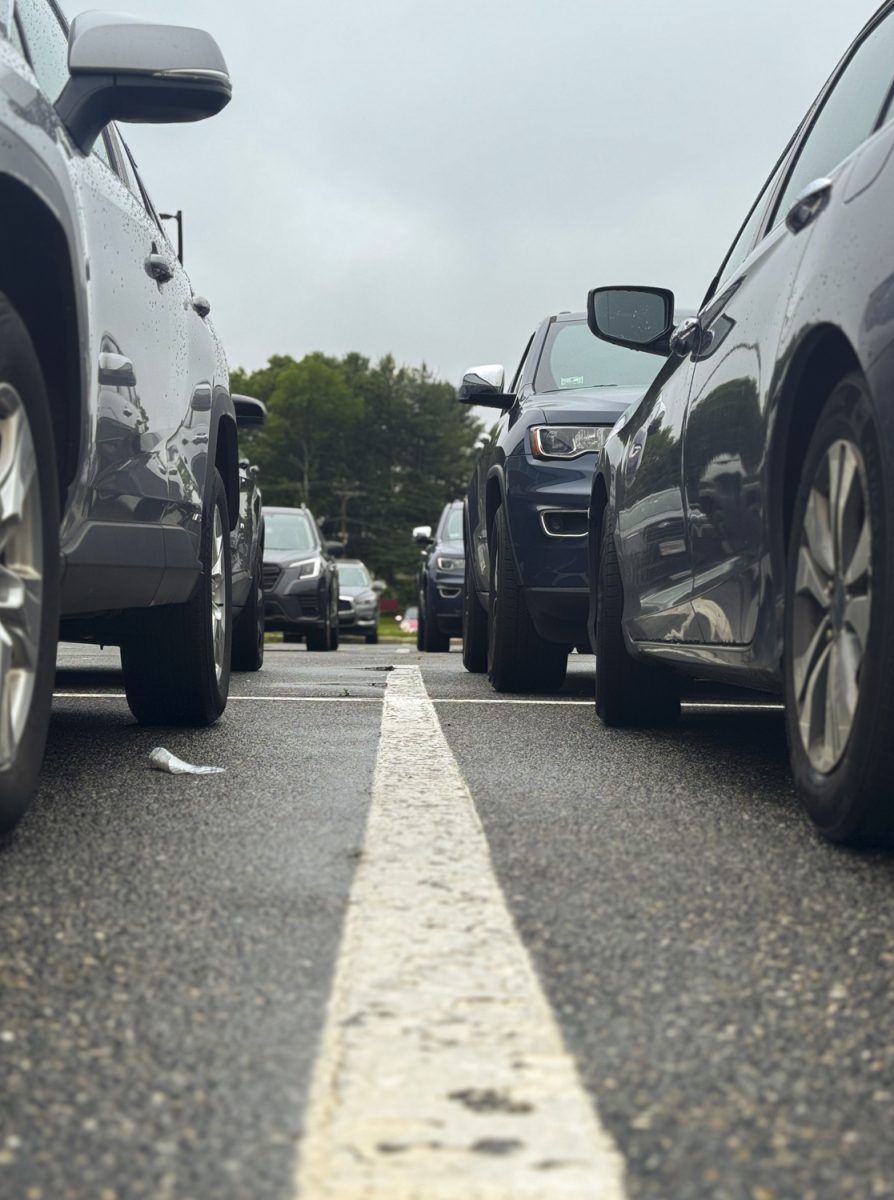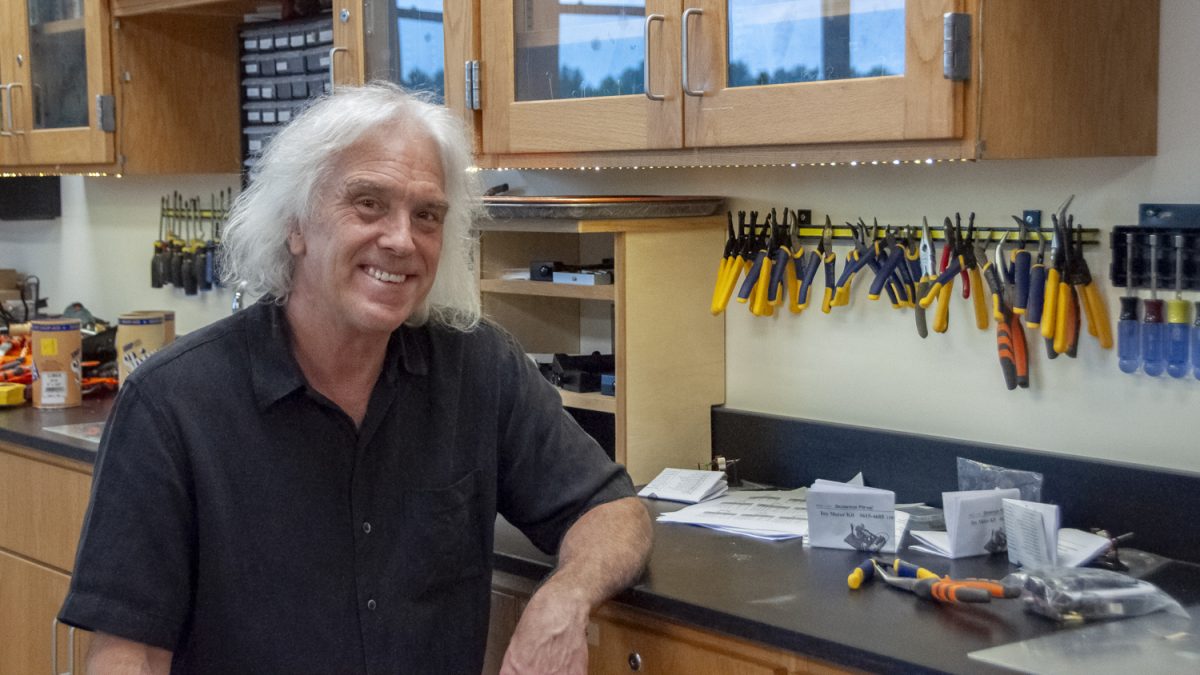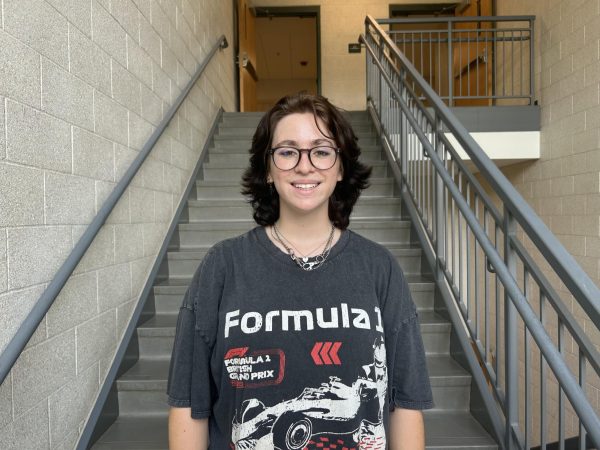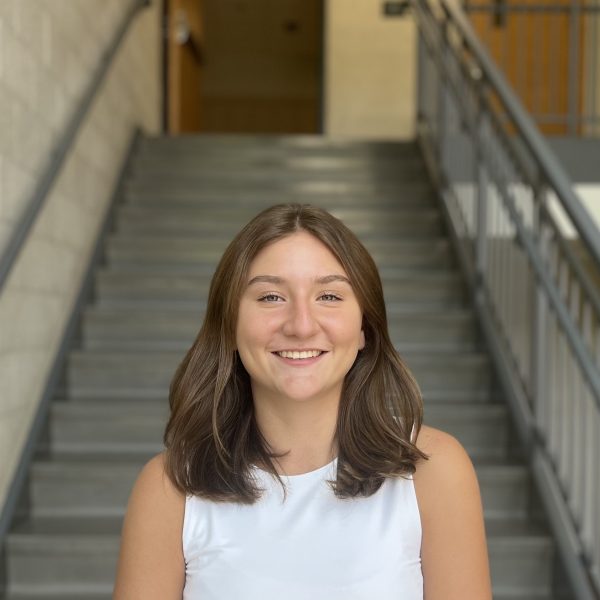The Algonquin chapter of Health Occupations Students of America (HOSA) partnered with medical professionals by hosting a blood drive in a Bloodmobile on April 3, giving over 50 students and faculty the opportunity to save lives without leaving school property.
Once checked in for their predetermined time slot, potential blood donors filled out a screening questionnaire before donating to prevent the spread of bloodborne pathogens and then waited their turn to enter the Bloodmobile. Each person donated a pint of blood, which took about 8-10 minutes.
Senior and HOSA president Iman Naqvi affirms the importance of individual contributions in repairing the deficit.
“It [a blood drive] can save so many lives; it’s such a simple thing to donate a pint of blood,” Naqvi said. “It’s something that a lot of people can do, and it’s an easy [process].”
The Bloodmobile is one of two mobile units managed by the Kraft Family Blood Donor Center at the Massachusetts General Hospital, which recently merged with Brigham and Women’s to become Mass General Brigham. Equipped with space for four patients at one time, the 40-foot-long bus parked outside the cafeteria for the entirety of the day as donors trickled in and out. The Bloodmobile’s unique approach allows for a greater reach of potential donors, as the medical industry grapples with a 40% decrease in donations over the past two decades as a result of the ongoing national blood shortage that has left millions of hospitals underequipped. Phlebotomist Erin LaChapelle cites the convenience factor of the mobile unit as one of its greatest strengths.
“It’s a good way to get people interested,” LaChapelle said. “Say somebody starts donating for the first time when they are 60 versus if we get them to start donating when they’re younger; [a school blood drive is] a great way to introduce them [at a young age] and hopefully gain some lifelong donors.”
This event marked the first blood drive offered at Algonquin since the last annual event before the pandemic. Like most medical centers, Mass General Brigham has been scrambling to meet the needs of their patrons for the past several years.
“For all the patients who need blood at our hospital, not enough people come into our blood donor center,” LaChapelle said.
Out of 73 registered donors, 51 units were collected throughout the day and transported to the hospital for processing. LaChapelle estimates this amount has the potential to impact over 120 patients after being split into packed red blood cells and frozen plasma to be used in transfusions.
Despite some general anxiety surrounding the process, student experiences with blood donation were overwhelmingly positive. Sophomore Lizzie Gowdy valued the opportunity to address the need for her specific blood type, which is present in only 4% of the U.S. population.

“I’m a rare blood type, so it’d be very helpful to other people with my blood type to take my blood,” Gowdy said. “It’s exciting to know that I could save somebody’s life.”
Some donors will experience adverse effects after having their blood drawn; junior Catherine Mechael was one of several students to faint after donating, a common result of the sudden drop in blood pressure.
“I sat down, and they started taking blood. I felt fine, and then I passed out at the end,” Mechael said. “They just had me sniff ammonia then got me apple juice and a snack, so now I’m good.”
Despite the unexpected reaction, Mechael went into the experience with the intention of donating to help someone in need and said she would “for sure” take the opportunity to donate again.
As the healthcare industry works towards recovery from the blood shortage, the health of millions of patients is dependent on action taken by able-bodied citizens. Saving a life is simpler than it seems; be the reason someone’s heart keeps beating by registering to donate today.



